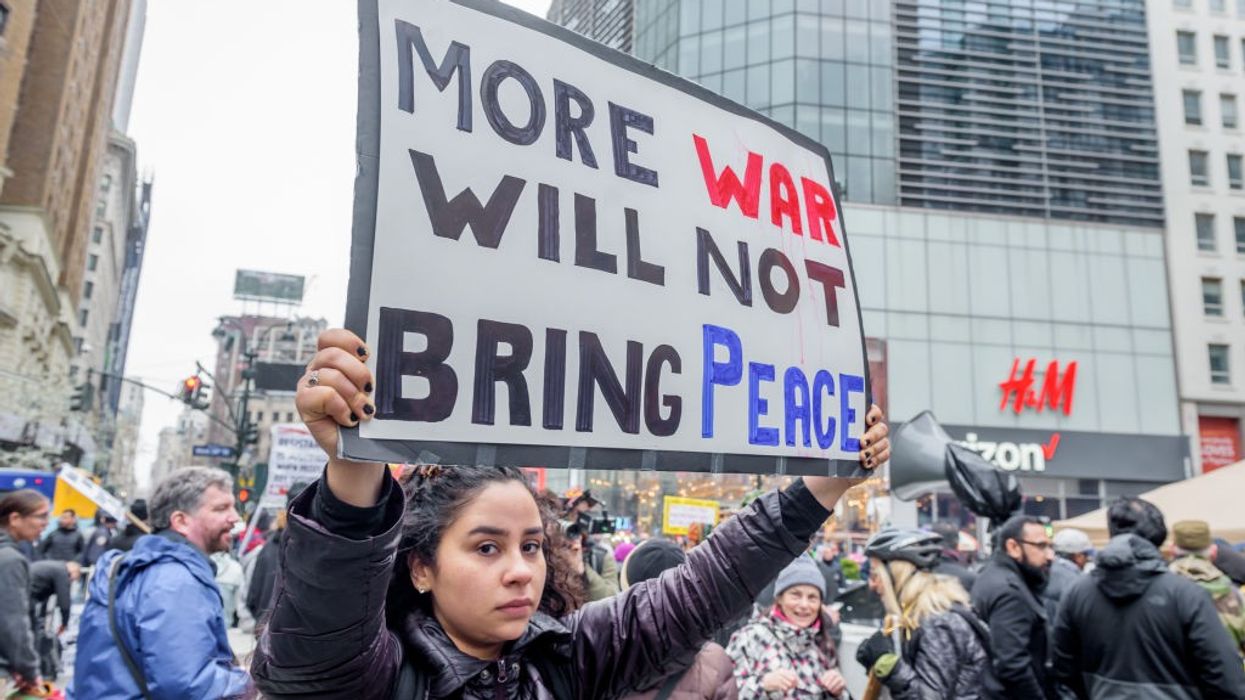Why Abolition Matters in This Moment
The crises of our generation demand a holistic approach that acknowledges the interconnectedness of systems of oppression and the need for a collective movement that dismantles state violence at all levels.
It feels like the world is spinning out of control as militarized violence, climate chaos, economic inequality, and authoritarianism escalate. At the same time, I've been inspired by an expanding sense of global solidarity, epitomized by the thousands who traveled to Egypt for the March to Gaza this past June and the millions who watched in real time as the Global Sumud Flotilla attempted to break Israel's siege this month. Amid escalating violence, the repression of civil rights, and the incarceration of peaceful protesters worldwide, there is a growing people's movement for transformative action that connects the dots between militarism, corporate capitalism, and the climate crisis.
In this context, I've been planning the logistics for World BEYOND War’s annual global #NoWar2025 Conference on October 24-26 with the feeling that this year's theme of abolition is especially timely. The crises of our generation demand a holistic approach that acknowledges the interconnectedness of systems of oppression and the need for a collective abolition movement that dismantles state violence at all levels. Abolition invites us to reimagine safety and security beyond punishment, control, and state violence.
Abolition is a project of liberation, a collection of goals, ideas, practices, strategies, campaigns, and movements aimed at abolishing institutions and forces of violence—from police and prisons to war and colonization. It’s an act of refusal, a rejection of the violent status quo. And a commitment to build something much better, together.
Admittedly, abolition can be a daunting concept. And in the face of encroaching state violence and authoritarianism, there can be an impulse to play it safe—to appease, or to attempt to reform. But the systemic issues we face necessitate a rethinking of the system itself, a paradigmatic shift away from the corporate capitalistic framework that fuels the inequities of our time. This starts first with daring to imagine what an abolitionist future could look like. The work of World BEYOND War challenges us to make that mental leap. Otherwise, we can get stuck in cycles of piecemeal reforms that never address root causes and upend the institutions that perpetuate violence.
The #NoWar2025 Virtual Conference on October 24-26 will be a key moment to come together across borders and movements to explore abolition as a visionary and necessary approach to dismantling systems of violence.
Importantly, dismantling violent and oppressive systems does not mean that society is left in a vacuum without support. On the contrary, abolition necessitates creating community-led nonviolent systems that center common security, meaning, “No one is safe until all are safe.” These models already exist and can be learned from and replicated.
Costa Rica abolished its military. South Africa ended apartheid (but work continues for reconciliation and reparations). Many Indigenous peoples around the world have long employed ancestral and liberatory practices beyond prisons, policing, and punishment while other communities are trying new models of violence interruption programs, nonviolent deescalation, community self-policing, court diversion, restorative and transformative justice, and much more right now.
Beyond a failure of imagination, a key impediment to abolition is the misuse of billions of our tax dollars. When we call for defunding the police and slashing the military budget, those funds must be adequately redirected toward meeting people’s basic needs and establishing robust systems for common security. To discount frameworks like unarmed civilian defense, violence interruption programs, and restorative justice processes as being unfeasible at scale overlooks the fact that most of these programs are grassroots driven with little funding. Imagine what we could achieve with the $1 trillion per year currently spent on the US military alone.
The #NoWar2025 Virtual Conference on October 24-26 will be a key moment to come together across borders and movements to explore abolition as a visionary and necessary approach to dismantling systems of violence, including police, prisons, militaries, and borders, while cultivating communities rooted in justice, care, and collective well-being. Join us.


